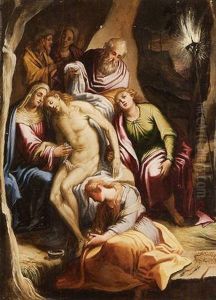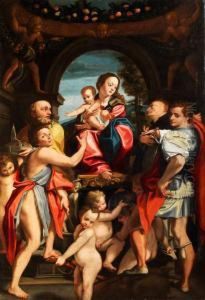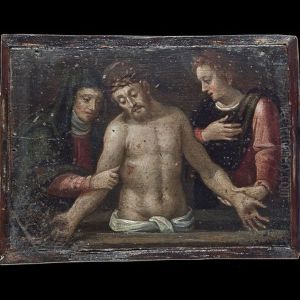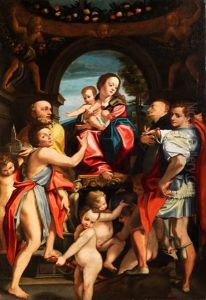Domenico Mona Paintings
Domenico Mona was an Italian painter, primarily active during the late Renaissance period in his native country. Born in 1550 in Ferrara, a city in the Emilia-Romagna region of northern Italy, he was a part of the rich artistic tradition that flourished in Italy during the 16th century. Mona's work was significantly influenced by the Mannerist style, which was characterized by elongated forms, complex compositions, and often an artificial (as opposed to naturalistic) approach to depicting figures and space.
Mona's career developed at a time when the Renaissance ideals of balance, harmony, and restraint were giving way to a more expressive and emotionally charged artistic language. Although there is not an abundance of documentation on Mona's life and work, he is known to have been active in Ferrara and likely trained under the guidance of local masters. His contributions to the art world are often overshadowed by the more prominent artists of his time, such as Tintoretto and El Greco, yet his paintings exhibit a distinctive use of color and a penchant for dramatic narrative.
Domenico Mona's works include religious subjects, which were typical of the time, as well as mythological scenes. His paintings can be characterized by their vivid detail and the dynamic movement of figures within the composition. Unfortunately, Mona's oeuvre has not been as well preserved or studied as that of some of his contemporaries, resulting in a somewhat obscure legacy. He died in 1602 in Ferrara, and much of his art remains within the region, held in local churches and private collections. Though not a household name, Mona's contributions to the Mannerist movement remain a testament to the diversity and richness of 16th-century Italian art.



